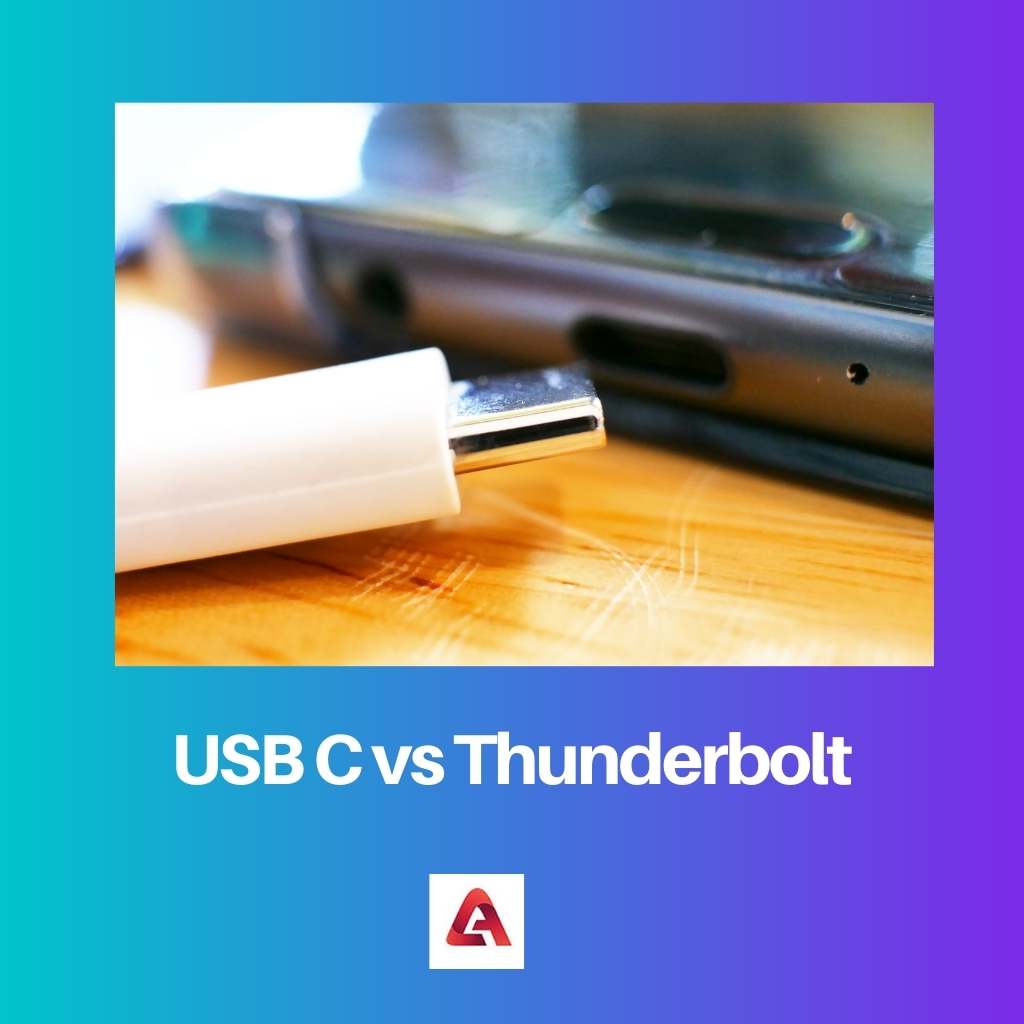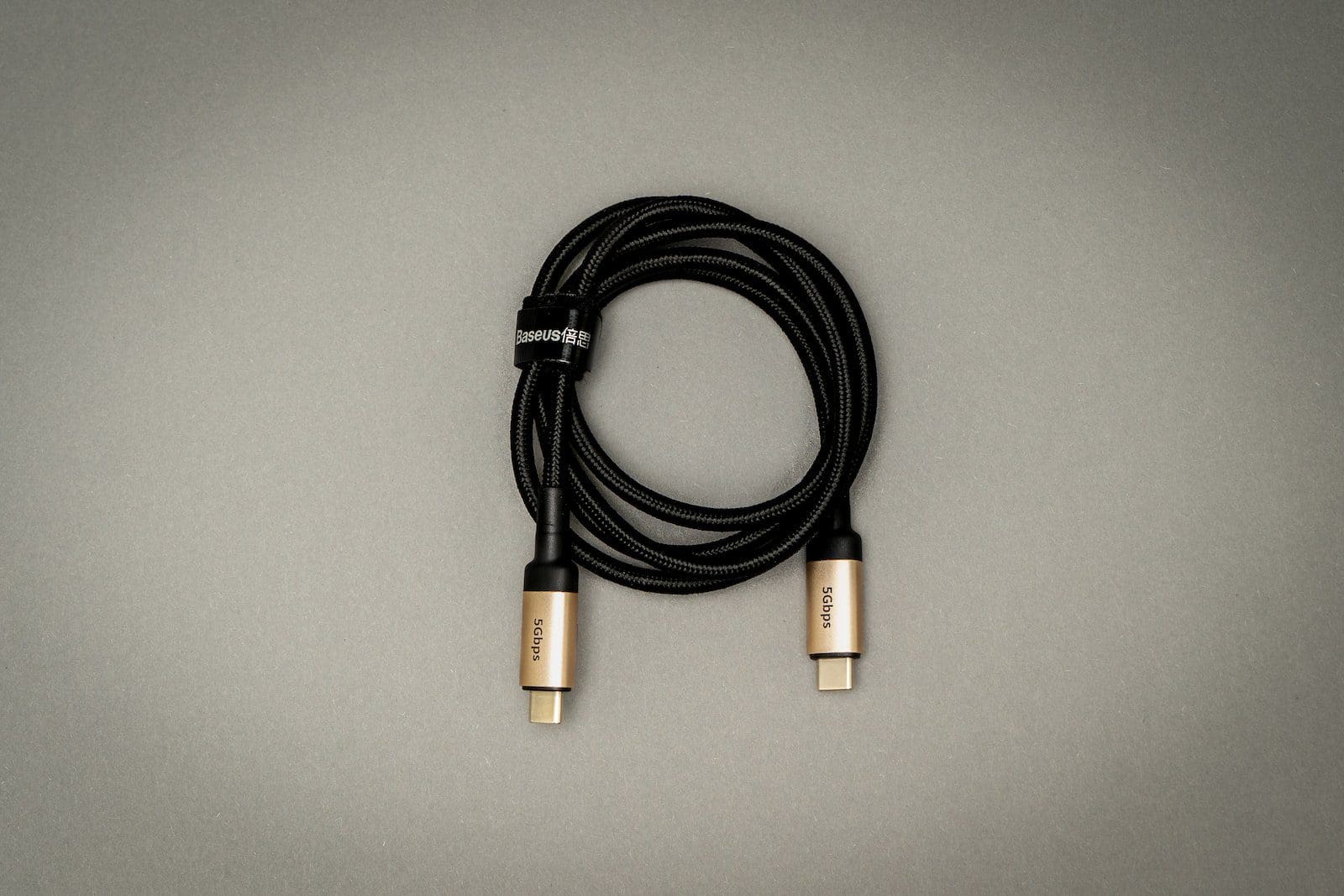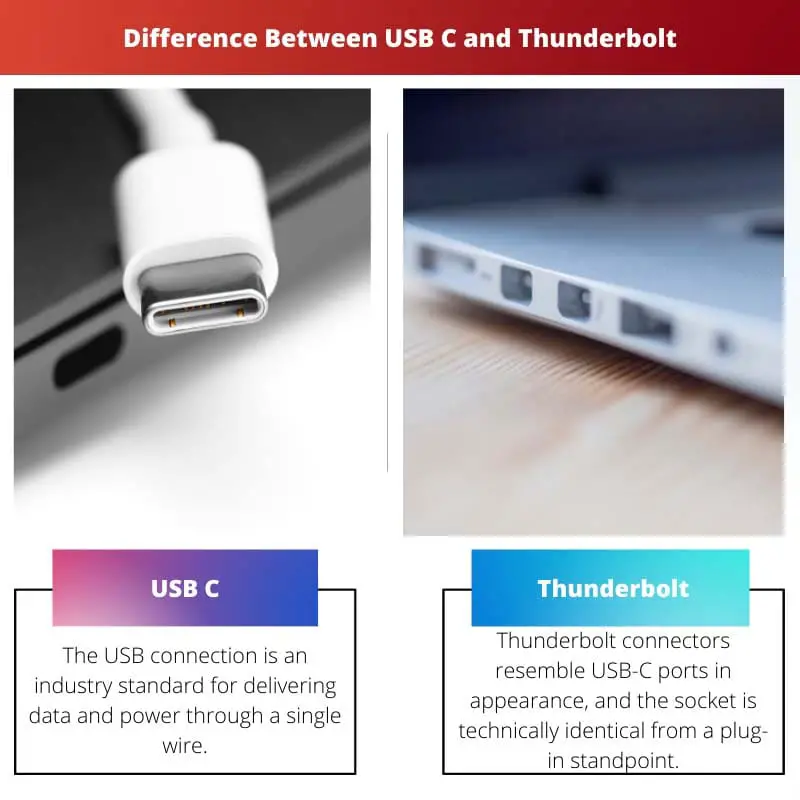Thunderbolt has changed throughout time (Thunderbolt, Thunderbolt 2, and Thunderbolt 3). USB-C gives users a universal port combined with Thunderbolt, with Thunderbolt 3 as the internal functionality and USB-C as the port’s form.
Many people are confused about the differences between the two as a result of this improvement. Let’s look at the capabilities of each to have a better idea of the distinctions between them.
Key Takeaways
- USB-C is a universal connector that supports various protocols and delivers power, data, and video.
- Thunderbolt is a high-speed connection standard, with Thunderbolt 3 and 4 using the USB-C connector.
- Thunderbolt offers faster data transfer rates and more advanced features like daisy-chaining multiple devices.
USB C vs Thunderbolt
USB-C is a more widely supported technology that can connect to many devices. Thunderbolt offers faster data transfer speeds and more advanced features such as daisy-chaining. Thunderbolt devices are more expensive than USB-C devices, and not all devices support Thunderbolt.

Almost all devices that support USB 3.1 use USB-C connectors, with some delivering an electrical output of 100w at 20 v with speeds of 10Gbps. USB-C has distinct recharging capabilities.
The output power allows bigger gadgets, as well as your typical smartphone, to be charged without the need for extra charging connections. There are several USB kinds and versions available.
The shape and style of the cable and port are referred to as USB kinds. USB versions are distinguished by their characteristics (such as speed/power) and cable compatibility.
Thunderbolt has been evolving current the latest version of Thunderbolt is 3.0. Thunderbolt 3 has a data transfer rate of 40Gbps, making it twice as fast as Thunderbolt 2.
Thunderbolt 3’s quick connection between a laptop or desktop monitor and an external graphics card enables better performance in activities like gaming with minimal to no lag.
It also improves signal reception and HD quality while communicating with Virtual Reality headsets for the best performance.
Comparison Table
| Parameters of Comparison | USB C | Thunderbolt |
|---|---|---|
| Price | USB C is cheap | Thunderbolt is expensive. |
| Data transfer | USB C is slow having 20 Gbps data speed | Thunderbolt is twice faster than USB C having 40 Mbps data speed. |
| Charging speed | USB C speed varies from 5w. | Thunderbolt could charge devices with 15w speed. |
| Compatibility | USB C is not compatible with Thunderbolt slots | Thunderbolt is compatible with USB C slots. |
| Usage | Used in most of the devices for its availability and pricing | Currently not being used in many devices. |
What is USB C ?
The USB connection is an industry standard for delivering data and power through a single wire.
At first appearance, the USB-C connector resembles a micro-USB connector, but it’s more oval and somewhat thicker to accommodate its main feature: the ability to flip.
Like Apple’s Lightning ports, the USB-C connection has had no up or down orientation.
If you line it up correctly, you’ll never have to turn the connection over to plug it in; the “right way” is always up. Standard cables also feature the same connection on both ends, eliminating the need to figure out which end belongs where.
A USB Reference Implementation Forum (USB-IF), a consortium of firms that have designed, certified and steered the USB specification over the years, created the USB-C connection.
Apple, Dell, HP, Intel, Microsoft, and Samsung are among the more than 700 firms that make up the USB-IF. As a result, USB-C ports are now found on a wide range of new gadgets in a wide range of tech sectors.
USB-C is used to charge batteries, transmit files, or both in hard disks, smartphones, and smart home appliances.
When it comes to connecting accessories and storage devices, as well as charging them, USB-C connections and ports can more than satisfy your demands for most users.

What is Thunderbolt?
Thunderbolt connectors resemble USB-C ports in appearance, and the socket is technically identical from a plug-in standpoint. In many circumstances, they can perform the same functions as a USB-C connector but at a considerably quicker rate.
Thunderbolt is a specialized version of USB-C, thus, you can use a USB-C-only device in a Thunderbolt port on either a computer without issue.
Thunderbolt 3 allows you to transport data at speeds of up to 40 gigabits per second. That’s twice as quick as the fastest USB-C connectors’ 20Gbps maximum transfer speed and four times faster than the classic Thunderbolt interface.
A Thunderbolt port could let you transport data faster to and from a compatible external drive than a standard USB-C connector. It can also open extra options for attaching external displays and expansion docks.
With a USB-C connection that supports Thunderbolt 3, you may use a single cable to power and transport enormous amounts of data (such as visual data for three or even more 60Hz 4K external displays) to or from a computer.
Thunderbolt 3 functionality is already being added to an increasing number of Windows PCs and peripherals.
Many late-model luxury ultraportable laptops include Thunderbolt 3 connectors, as do an increasing number of external drives and extension docks.

Main Differences Between USB C and Thunderbolt
- USB C is cheaper than Thunderbolt, which is one reason that USB C is so common in the current market.
- USB C is not as fast as not as Thunderbolt, that is the reason Thunderbolt is currently used in displays with high framerate.
- Thunderbolt connections are completely compatible with USB-C devices & cables, but they have a few features that set them apart from USB-C ports.
- A Thunderbolt 3 cable delivers a standard 15 watts of electricity to devices. However, any device that supports the Power Delivery protocol may be charged at up to 100 watts, the same as USB-C.
- The Thunderbolt 3 cable can transport up to 40 terabytes of data per second, which is twice as fast as USB-maximum C’s data transfer speed.

- https://ieeexplore.ieee.org/abstract/document/8329751
- USBC (Universal Standard Bibliographic Code): its origin and evolution – F.H. Ayres, L.P.S. Nielsen, M.J. Ridley, I.S. Torsun, 1996 (sagepub.com)

I find the comparison table to be very helpful. It provides a clear overview of the differences between USB-C and Thunderbolt.
This is a very informative article. I was able to understand the difference between USB-C and Thunderbolt.
I think the article does a great job of presenting the benefits and drawbacks of USB-C and Thunderbolt technologies.
The author should have provided more technical details of USB-C and Thunderbolt, it feels like some critical information is missing.
I had no idea about the differences between USB-C and Thunderbolt, this post has been very enlightening. Thanks for sharing.
I believe that the article lacks depth. A more comprehensive comparison of the two technologies is necessary.